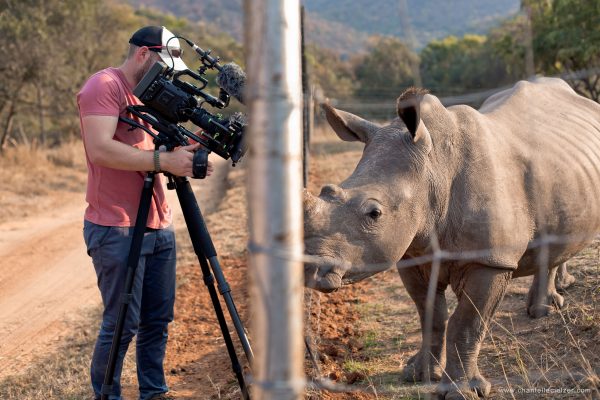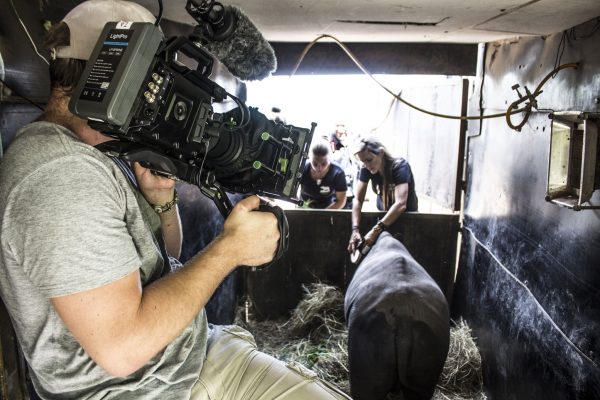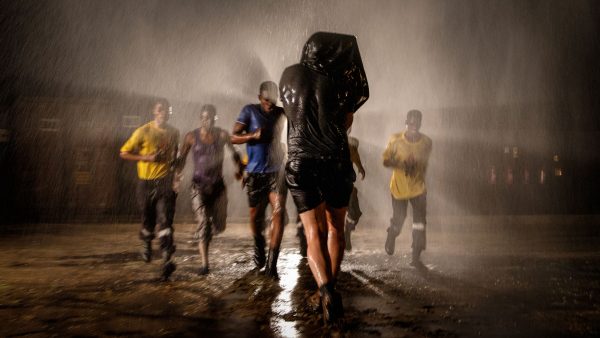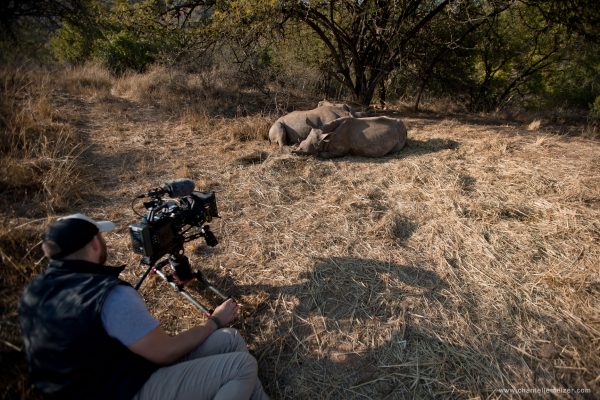After successfully crowdfunding his film Disunity, Garth de Bruno Austin had a slightly unusual problem. The documentary focuses on the plight of orphaned rhinos, and in pledging to fund the film “[backers] were going to help feed and protect orphan rhinos at the same time.” This meant a sizeable portion of the $61,000 US he and his partner raised on Indiegogo went straight to the charity he wanted to film with.
Crowdfunding for rhinos

“We kitted them out with a solar panel system, lighting… we got them night vision thermal imaging cameras [and] $2,000 of orphan rhino milk,” he says over Skype. Not supplies you can just pick up from B&H.
All very noble, but Garth’s list of requirements for the camera package was a demanding one, and the donations had taken a hefty chunk of his production budget. “I wanted something that wasn’t a DSLR… really high quality bit depth – a camera that I could put on my shoulder that wasn’t going to break the bank.”
“…a camera that I could put on my shoulder that wasn’t going to break the bank”
It turned out there was one camera that ticked all the right boxes: The Blackmagic Ursa Mini 4K. Strangely, it could have been built for this project. A tough, shoulder-mountable camera that gives its best in abundant light and doesn’t need to be built out into a “Frankencamera,” as Garth puts it, to be useable.
Lenses likewise had to be purchased with one eye on the budget, and Garth chose a pair of Sigma zooms: a Newsshooter favourite, the Sigma 18-35 f/1.8, paired with a 70-200 f/2.8.
Blackmagic Ursa Mini 4K: Shooting style

Garth shot on the shoulder a lot, using Blackmagic’s own EVF – vital in the bright, sunny conditions. Not having to use the camera’s big fold out display also meant that three modestly-sized 95Wh V-lock batteries lasted him all day.
“I went quite old school”
A mattebox and NiSi filters (“I went quite old school”) compensated for the lack of onboard ND and helped tame the camera’s IR sensitivity. The filters also allowed him to keep the ISO at a relatively constant 200 for the best image quality possible. This is one of the things that Garth would change about the camera – “The biggest thing for documentary filmmaking would be a built-in ND.” The Ursa Mini attracted criticism at its release for lacking this feature – and it’s surely a slightly bitter pill to some owner-operators that the new Ursa Mini Pro does sport internal ND filters.

Conditions during the shoot were challenging: long days in hot, dusty conditions. The Ursa’s taken some stick for its, shall we say, substantial heft. But it turns out that has its compensations. “The dust doesn’t affect it at all,” says Garth. “I love this Ursa. It’s rugged, hey? I was right under the rotor blades of a Huey [helicopter] in the dust and… nothing. The camera has not faltered once.”
Pick a camera, any camera
And though there have been a slew of new cameras announced since he started the project, Garth’s advice is “Don’t get hung up on new cameras. Pick a camera and get good at it.” Before shooting began in earnest he took a week to get used to the kit and work out its strengths and weaknesses. “I think [while shooting] I pushed it to ISO400 once. What I did a lot was underexpose things because of all the testing I’d done I knew I was comfortable bringing everything back up without adding noise.” In fact he found about a stop and a half of latitude in his footage when shooting this way.

The film was mostly shot in HD, in the camera’s Film DR mode, and will be finished in a 2.35:1 aspect – Garth used frame guides on the camera while shooting to help his composition. “It’s going to have a very cinema grade… we want it to look as much like a movie as possible,” he says.
With shoots still to come in Botswana, China, Zimbabwe and Vietnam, the project isn’t over yet, although Garth already has 12TB of rushes. He’s found Shotput Pro a great help in managing all those files and Izotope Rx invaluable in cleaning up audio tracks.
And although he’s upgraded to an Ursa Mini 4.6K for the latest shoots, he says the success or otherwise of a project just isn’t down to the make or model you’re shooting on.
“Don’t worry about the capability of the camera. Just make sure you know how to use it… and focus on the story.”





